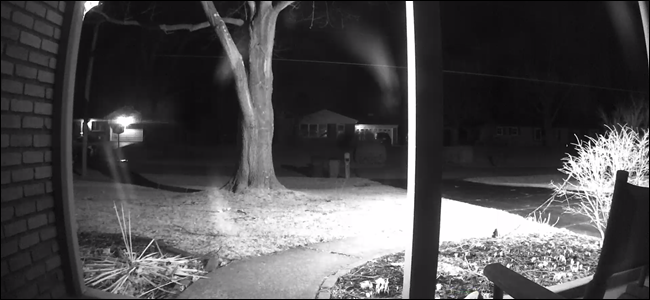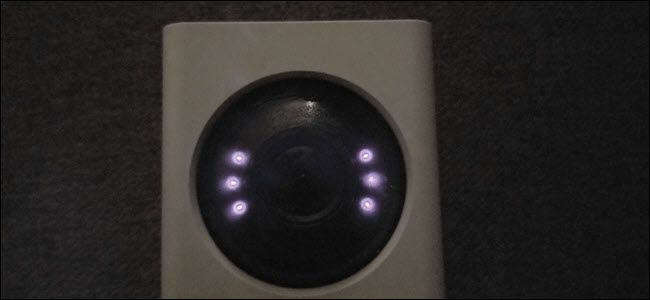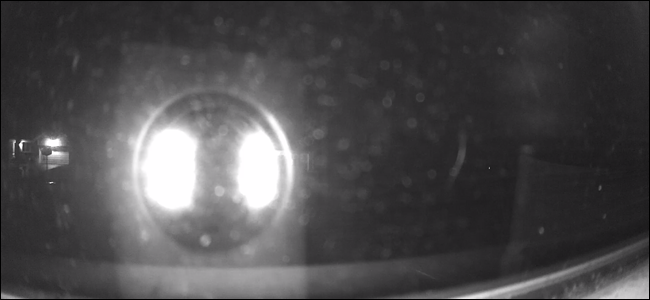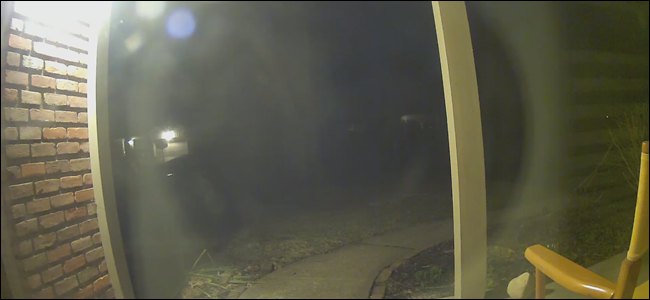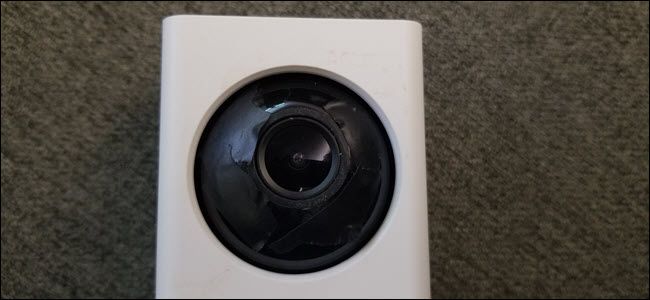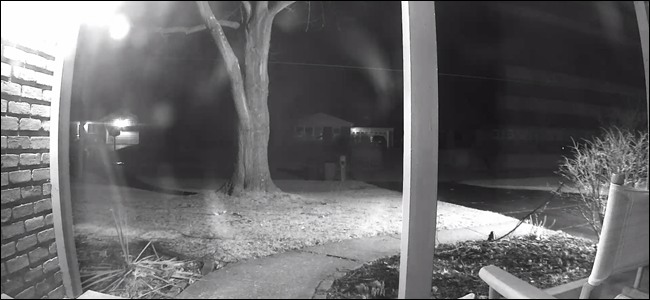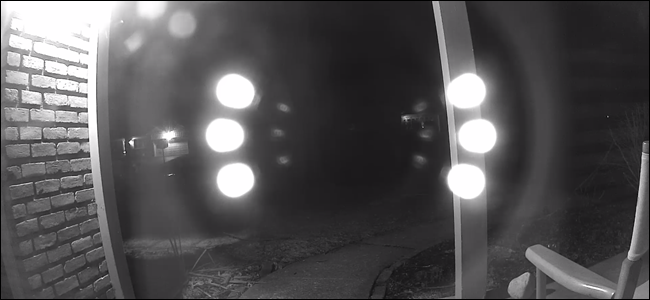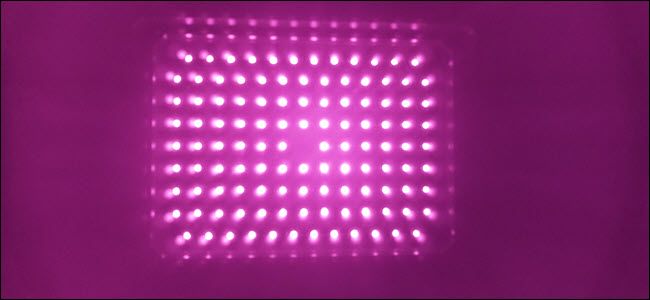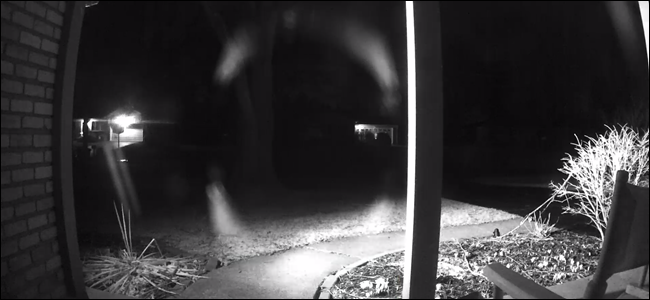Quick Links
Wi-Fi cameras rely on infrared (IR) for night vision. But IR bounces off glass---so, if you're using your camera behind a window, you'll only see a blurry reflection at night. Here's how to get a clear image.
Night Vision and Window Panes Don't Mix
Night vision on most Wi-Fi cameras uses a relatively simple trick of physics. One or more IR LEDs blast out as much light as possible, acting as a floodlight. Because infrared isn't visible to the human eye, you don't even notice, and your camera can use that IR light to record video at night.
If you've ever tried to point your Wi-Fi camera out a window, you've probably found that it works perfectly during the day. But, at night, it's a blurry mess of video, showing mostly just the reflection of your camera and smears of light.
This completely defeats the point of even having a security camera. If your camera did see someone outside, you'd never know what they looked like or what they were doing.
If you want your camera's night vision to work through glass, you'll want to provide exterior lighting. You can use either traditional outdoor lighting or IR lighting. You must also either turn off or cover the camera's built-in IR lighting. Finally, you will either have to move the camera as close as possible to the window or angle it slightly instead of using a direct-on angle.
The best thing to do, of course, is to use an outdoor camera. An outdoor camera will bypass issues with glass and still benefit from most of these suggestions. But, if you can't use an outdoor camera for any reason, consider these options to improve the video you do get from your indoor camera.
Consider Leaving the Porch Light On
The first goal in gaining a better picture is to take the built-in IR lights out of the equation. Traditional lights are the simplest way to accomplish that goal. If you have a porch light, leave it on. You can then turn off night mode on your camera.
The options here vary from camera to camera. Some cameras, like the Wyze Cam, only let you turn off everything. When night mode is off, the IR lights won't turn on. Depending on the camera, your video may be in color. As you can see above, the picture is clear enough that you would see the face of anyone who approached your door at night.
But this has an obvious downside: You're using electricity all night and potentially annoying your neighbors. Motion-activated lights are a better solution. You can find battery-operated lights that are easy to attach to your door or wall, like the Overlight. Or you could consider a powered solution with floodlights. A floodlight on its own can be more effective than a porch light. Combined, they can make for crystal clear video.
Turn Off or Cover the IR LEDs
In the above example, the camera's video is still in color, which provides less detail. If you want less noise and more clarity, you'll want to keep the video to monochrome. Some cameras will let you turn off IR lights while staying in monochrome mode, but others like Wyze Cam are all or nothing. If that's the case, a little electrical tape will do the trick.
Your outdoor lighting is still useful with the IR lights covered, but you'll get a little better detail in monochrome video---especially if you use multiple outdoor lights. The excess light will drown out the reflection of your camera as well.
Either Turn Your Camera Slightly or Move It Closer
The reflection of your camera in the window is a problem you'll still run into. Darker cameras, like the SimplifSafe camera, are better than the bright white Wyze Cam. Turning the lights off in the room will help, but you should move your camera as close to the window as possible for the biggest improvement.
The image above shows a worst-case scenario where the IR lights are still active even though the porch light is on, but you can see enough detail to get by. Turning off the IR lights improves the picture even more.
If you can't push the camera onto the glass, try to angle it to offset the reflection. Even an angle of five degrees will help. Moving the reflection out of direct line of sight will clear up the picture enough so you can get by.
Instead of Traditional Lights, Use an IR Illuminator
Traditional lights aren't always the best option. Depending on where want your camera to record, your neighbors may not appreciate floodlights blaring light into their house at night---or it may even blast light into your own home.
And, while traditional floodlights will work, an IR illuminator is an even more effective solution. Think of it like a floodlight---but, instead of using light from the visible spectrum, it blasts infrared light. The picture above shows IR illuminator turned on. But, when you look at the device in person, all you'll see is dim purple lights.
The idea here is to replace the built-in IR lights of your security camera. Turn them off or cover them up (you want to be in monochrome mode), and mount the illuminator to the exterior of your home. As far as your camera is concerned, you've effectively mounted an extremely powerful spotlight. To the human eye, there may appear a curious set of dim purple lights. Noticeable, but easy to ignore.
In the image above, the IR illuminator is pointed at the sidewalk, making that the brightest point. You should test exact placement and positioning before permanently mounting the unit to your house.
IR illuminators can work in tandem with traditional lights, and if you want the absolute clearest picture that route to go. The above photo uses all the methods discussed above. The Wyze Cam sits as near to the glass as possible, with its IR LEDs covered. The IR illuminator aims for the sidewalk, and something triggered the motion-detecting floodlight above the garage.
Check Your Camera For Pixel-Based Motion Detection
Day or night, not all Wi-Fi cameras support motion detection alerts through windows. Wi-Fi cameras rely on one of two methods to detect motion: Either they use their IR sensors to identify changes in heat, like a nearby human, or they measure changes in pixels in the video.
If your camera uses its IR sensors for motion detection, you won't get any alerts behind glass. Just like with your night video, the IR is bouncing off your window before it can ever reach a potential human. Your camera can't detect any motion.
Pixel-based motion detection doesn't have this issue and can work through windows. You'll want a camera that uses this method of motion detection if you plan to keep your camera indoors and pointed to the outside world.
A basic rule of thumb is that most battery operated cameras (like the Arlo Ultra) use IR detection and most plug-in cameras use pixel-based detection. But exceptions exist. For example, the Simplisafe camera is a plug-in camera that uses IR motion detection and isn't a good choice for window security.
Not every option may work for your scenario, but if you experiment you will find the right set of conditions that make your camera work well behind glass at night.

